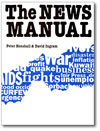 These chapters build on the basic techniques of journalism which we looked at in Chapters 1 to 24. They look at more advanced reporting skills, and how they are applied in a number of special areas of life.
These chapters build on the basic techniques of journalism which we looked at in Chapters 1 to 24. They look at more advanced reporting skills, and how they are applied in a number of special areas of life.
The specialist reporting of certain areas of life is called rounds reporting. Chapter 26 is therefore an introduction to rounds reporting and how to do it well.
Chapters 27 to 38 look in detail at six rounds which make special demands on reporters: politics, industry & finance, science & technology, religion, minorities and crime.
Chapters 39 to 45 deal with special kinds of journalism to handle special situations. We look at investigative reporting, how to handle stories of death and disaster, and how to handle stories which are happening as you report them - breaking stories.
Chapters 46 to 49 are specific to particular media - news pictures, for print media; and writing and production for radio and television news and current affairs, for broadcast media.
Because newspapers and news bulletins do not only contain news, in Chapters 50 to 55 we look at some of the other areas which journalists have to cover - features, obituaries, reviewing of arts and other creative activity, and sport.
The structure of this volume of 'The News Manual' has changed slightly from the book version. To save you having to scroll down too much text on-screen, some chapters in the book have been split into several web pages for this online edition. If you are new to 'The News Manual', you might like to read these 'linked' chapters together, e.g. Chapters 35 to 38 on Crime reporting. To make it easier to read these whole topics from start to finish, links have been provided at the bottom of each page to take you to the next instalment in that series.
There are two ways of finding things in The Manuals. You can either go to the main Index by clicking on the link on the right of this page, or you can follow the 'QuickLink to the News Manual volumes' (also on the right) to see a list of chapters for each of the three volumes.

